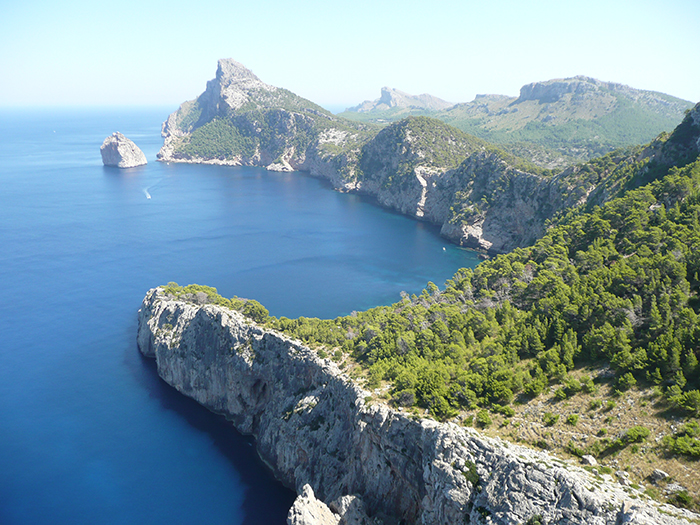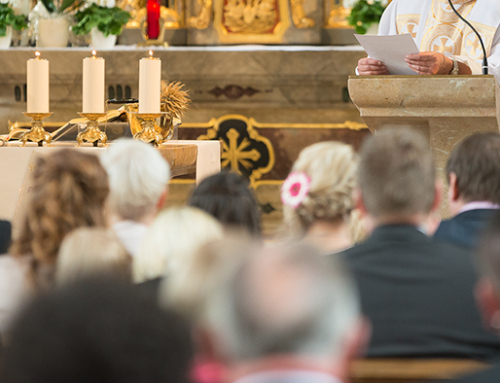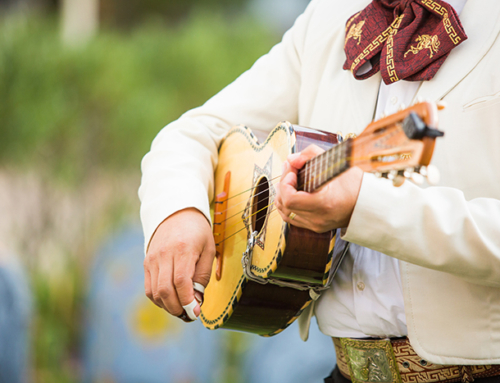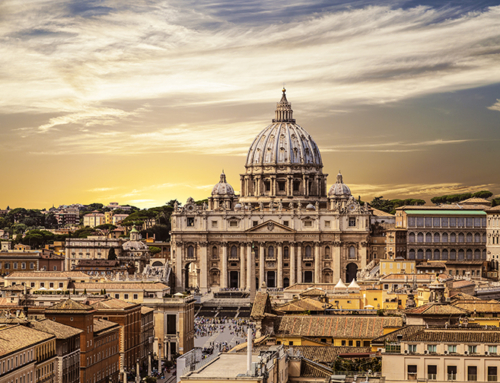The Spanish Civil War ended in 1939. After this long period of more than five decades, we are now far removed from that conflict. In addition, the Spanish Civil War was overshadowed, historically, by World War I (1914-1918) and World War II (1939-1945). We might easily forget that the Spanish War had broad implications that extended far beyond Spain itself.
As Sanchez points out: The Spanish Civil War was the dominant European event of the 1930’s prior to the crisis that led to the outbreak of World War II in 1938-39. It polarized the political consciousness of a generation, in some respects more so than did the opening round of the World War itself, for the Spanish contest was held to be a true contest of principles, an international ideological civil war to a much greater degree than anything represented by the standard clash of rival national egotism. While the war had such repercussions internationally, it also had serious repercussions in Spain itself. It was essentially a revolutionary/counter-revolutionary civil war between left and right. On the left were liberal, democratic and socialist forces (including Communists). On the right were the traditional, conservative forces supported by the Army, the bourgeoisie and the Roman Catholic Church. Catholic culture dominated Spain prior to the Civil War. This culture was really more than a religion:
It was a way of life, a framework of reality that was intimately bound up with Spain’s history…an attempt to recapture the role that Catholicism had once played in what was perceived as the Church’s historic mission to the Spanish people.
Actually, Spain had three civil wars between traditionalists and liberals in the 19th century (1821-23, 1833-40, and 1869-76), or between religious traditionalists and progressive Catholics who usually were anticlerical. Here we should define terms. First, the traditionalists were Catholic men and women who were ideologically committed to establishing a clerically dominated state. They solidly supported the clergy. They saw religion as the universal force that held Spain together. Among them were the Carlists, who hoped for the return of the monarchy.
Then there were the liberals, or anticlericalists, persons who were opposed to a clerically dominated state. They wanted a secularist state, where there would be no religious principles in public life. There were three major attacks against the Spanish clergy. They owned about one-fifth of the national territory, and the politicians looked upon these lands as a possible solution to the country’s economic problems. Confiscation began on a small scale in the 18th century; the major attack came between 1836 and 1876, when clerical institutions lost most of their land. The effect upon the Church was profound. The clergy lost their rent lands; as recompense the government made them salaried civil servants. Their salary did not bring sufficient income to meet their needs. As a result, they turned to the middle class for help. This in turn meant that they compromised their principles. Now, they were endorsing economic liberalism, although traditionally they were against materialistic secularism – which they mistakenly identified with the former. In 1832 and 1834, there were outbursts of anticlerical violence in which priests were killed and churches burned. But the clergy themselves were partially to blame, because some of them engaged in armed warfare in these conflicts.
After the loss of their position in public life as just described, the clergy became defensive, because it seemed that the problems of Spain found their solution at the expense of the clergy. Their defensiveness took the form of an elaboration of the part that the clergy played in the past history of Spain and an effort to revive their past glories. However, the clergy had greater problems to face. The found themselves ever more on the defensive as the secular working-class movements of socialism and anarchism.grew. The clergy were not prepared to react to them. They were in effect not able to face the demands of modern life.
For centuries the clergy were the dispensers of charity and public welfare. This, too, was lost. Also lost was the respect of the urban working classes of men and women, as the clergy became identified with the upper/middle class people. Thus the clergy and the Roman Catholic Church were viewed as bourgeois, rightist and unprogressive, while the forces on the left were considered as liberal, progressive and democratic. In this atmosphere, to be a Catholic and to be in favor of liberal democracy appeared as an impossible combination, if not indeed a contradiction.
As time went on, there were assassinations, violence and martial law. Finally, the constitutional government was overthrown by the army in 1923. General Miguel Primo de Rivera became Spain’s military dictator. Throughout Rivera’s dictatorship, the clergy continued their defensiveness, which they used to condemn the modern world. Few of them understood the problems. Their main thrust was supporting the Catholic culture with pious religiosity. In this, they were not unlike the Catholic Church elsewhere, which tended to condemn the material aspects of modern life.
By the 1930’s the anticlericals wanted to destroy the Catholic culture and replace it with a secular society. One public leader, Manuel Azana, a typical anticlerical and president of the Spanish Republic, said in 1931, that “.forbidding the clergy from teaching the nation’s youth was a matter of public mental health.”
The modern anticlerical fury began in 1936. No other anticlerical persecution in Christian history was so severe. The numbers killed are as follows: 4,184 diocesan priests and seminarians; 2,365 religious clergymen (i.e., those belonging to religious orders); and 283 nuns. The total was 6,832. The Republicans killed 72,500 persons. Of this number, nearly 10% were clergy and religious, and the rest were lay persons. The lay persons who were killed belonged to religious associations and attended Church regularly, or were relatives and friends of clerics. In addition to the killing, some 10,000 churches were burned or assaulted, and nuns’ tombs were opened and their petrified mummies were displayed and subjected to ridicule. Most of the killings occurred in the first six months of the uprising. The ruling government armed the labor unions and members of left-wing political organizations just as soon as the war started. The government lost control as arms were passed out to anyone who could then act with impunity. There are numerous accounts by eyewitnesses, both men and women, of how the killings took place. It was rumored, and incorrectly, that the clergy kept supplies of armaments in their churches, and this infuriated the people and contributed to the killings.
Why this intense anticlericalism? Why all the killings? Why the desecration of 10,000 churches? First of all, it must be remembered that anticlericalism had been a Spanish phenomenon that was deeply rooted in its cultural history.
Secondly, the violent anticlericalism of the Civil War was caused by clericalism, or by perceptions of it by various groups of people. Thus, the urban working class looked upon the clergy as their enemies. At the beginning of the Civil War when the government made no effort to restrain the fury, these classes found their opportunity to vent their anticlericalism in violent ways.
Thirdly, it would seem that clericalism itself had failed after centuries of domination, and now that the government stood passively by, some of the people took this opportunity to vent their rage. Besides, it should be noted that some of the assassins and arsonists were criminals set free by the government. They were known as the “uncontrollables.” Other anticlericalists were idealists, i.e., persons who suffered for years in poverty and misery at the hands of persons in the possessing classes. And some clergymen counseled people to accept their status humbly. These have-nots, both men and women, held them responsible in part for their condition.
Finally, many of the clericals supported the Nationalists. This made them enemies of the Republic, members of a military conspiracy, although some clergymen were neutral and some supported the existing government. There were, however, some priests who broadcasted anti-republican propaganda over the radio from Nationalist Territory. This caused persons who were extremist to view “every priest as an ally of the rebels.”
A thorough study of the part played by the clergy indicates that some priests fired from their churches in some isolated cases, largely in self-defense. But the anticlericalists exaggerated such cases, and used the newspapers to print things that were for the most part untrue. In the 1936 elections, it became clear that persons of the working-class political parties wanted not only to destroy the influence of the clergy, but also to replace Christianity with belief in the socialist revolution. They saw the clerics as associated with the men and women of capitalism their real enemy. In addition, there was the Anarchist-Syndicalist trade union that was also bent on the destruction of Christianity. The Church as a social institution was to be destroyed. It must be said that the Socialist party was the chief proponent of the social revolution which led to the Civil War. Their hatred for the Church grew largely out of their criticism of the clergy, whom they saw as catering to the wealthy classes of men and women, and they spread exaggerations about the so-called clerical wealth.
The clergy themselves, with limited and narrow seminary training, emphasized a puritanical view of life and the acceptance of one’s station in life, and they preached a great amount of superstition.”
However, once the war started, the clandestine church was set up so that it operated on three different levels: in the prisons and hospitals, in the embassies of foreign governments, and among the general populace. In many cases, there were priests who distinguished themselves in administering the sacraments.
“And there were those Catholics who supported the Republic. Clergy and laity both, most of them felt that other issues of the war were more important than the religious issue; or rather they conceived of the religious issue in broader terms than the clerical-anticlerical struggle. Many of them felt that the social issues of the war and the working-class struggles, placed in the context of the teachings of modern social Catholicism, transcended the attacks upon the clergy and clerical Catholics; and, further, that the authoritarian and fascist tendencies of the Nationalist forces were more threatening to the future of the Church than what they considered justified anarchist violence or momentary Communist atheism.”
One of the important issues in Spain during the Civil War was the Basque problem. The three Basque provinces of Guipuzcoa, Vizcaya and Alava had long labored for independence. They supported the Republican government because it provided the legislative machinery for regional autonomy. When their territory was conquered by Franco’s nationalists, fourteen priests along with many laymen were executed. It was a major scandal, because the bishops strongly supported the Nationalists.
In the late summer of 1937, the Spanish bishops published a letter about the war. It was addressed to their fellow bishops throughout the world. It was designed to tell the truth about the war; that is, to dispel the false information about the war that had spread throughout the world. Cardinal Pacelli was the first to suggest such a letter. General Franco himself warmly supported it, for he believed it would support the unconditional military victory that he contemplated.
The collected letter of over 9,000 words spoke of the anticlerical fury, dispelled the false accusations against the clergy, supported the Nationalists, spoke of a Communist conspiracy to seize power, told of the assassinations and discussed many other issues bearing on the complexity of the whole situations, especially the fact that the war was being fought for religious reasons.
The letter was not intended for domestic consumption. It is questionable about how much good it accomplished abroad, because by the time it was issued, foreign opinion had hardened. All in all, the bishops hoped to influence foreign opinioin. However, what really happened was that they compromised themselves, for they supported a government which committed wartime reprisals. They did not protest the atrocities of the Nationalists, but remained silent.
One phenomenon associated with the Spanish Civil War was the debate concerning whether or not the conflict was in keeping with the teaching of Catholic theologians on a just war. This debate went on not only in Spain, but in many other parts of the Catholic world. Many of the nuances of this debate are beyond the purposes of this thesis. In addition, the religious climate left much to be desired; it was marked by apathy and secular humanism.
Thus, the first half of the twentieth century for Spain was characterized by violence and instability. Communism, atheism, and anticlericalism found their way into the lives of many Spaniards. The dictatorship of Primo de Rivera (1923-1930) occurred early in the century. It was followed by the unsuccessful Second Republic, which was marked by severe persecution of the Church. As a reaction to it, the Falangist party was formed, whose members were really Spanish Fascists. In 1936, the Populist Front took over the government. However, by July of that year, the revolt by the generals began, and the Civil War that ensued lasted until March 29, 1939. Francisco Franco, a Fascist general in charge of the Spanish army in Morocco, was the leader of the revolting generals. He became dictator of Spain in 1939 and remained in that position until his death in 1975. He brought peace and order to a country wearied by war. It was during his regime that the Cursillo was born partly in reaction to the leftist tendencies that had made their inroads into Spain.
Next: Spain’s Relationship With the Vatican






